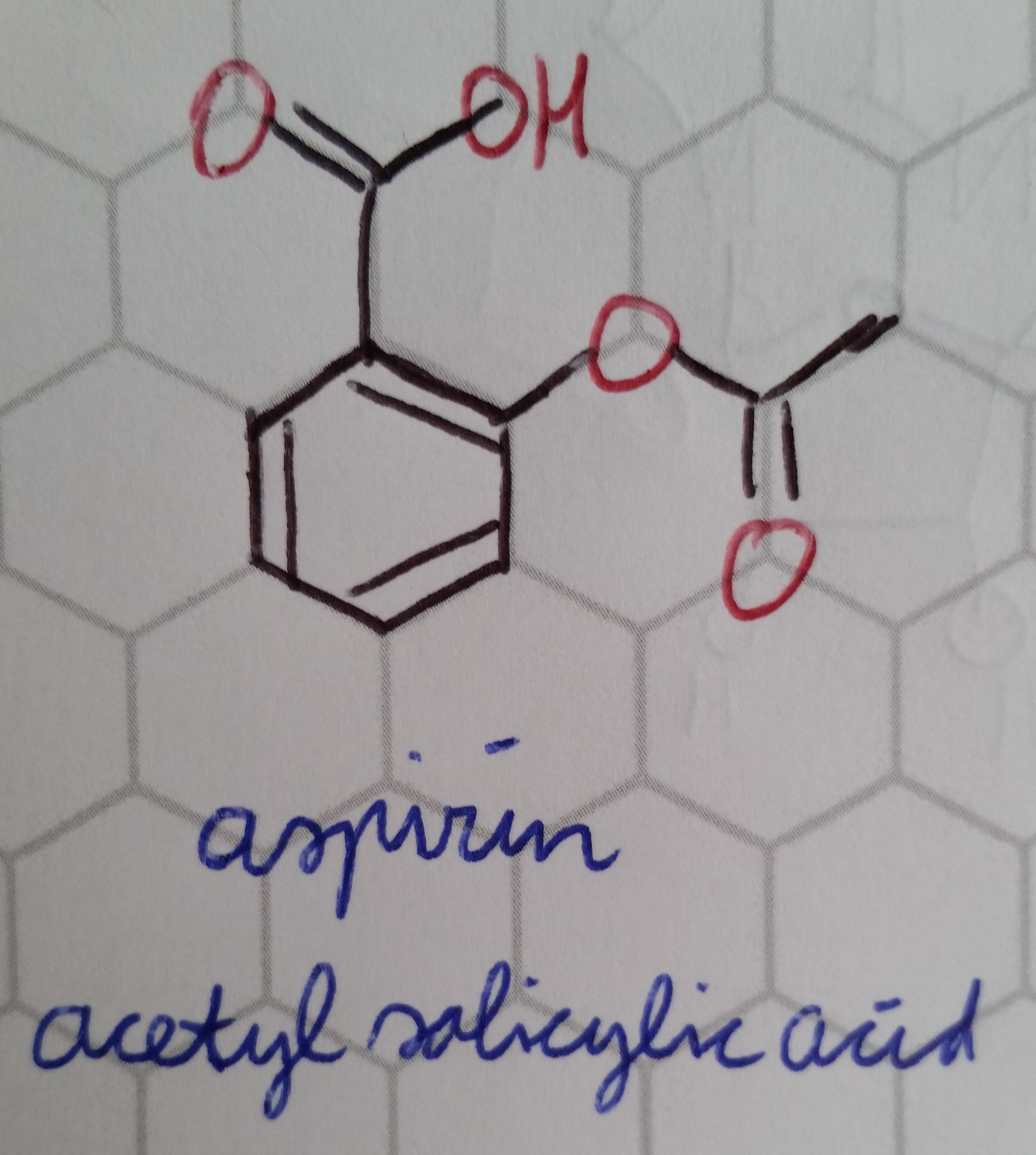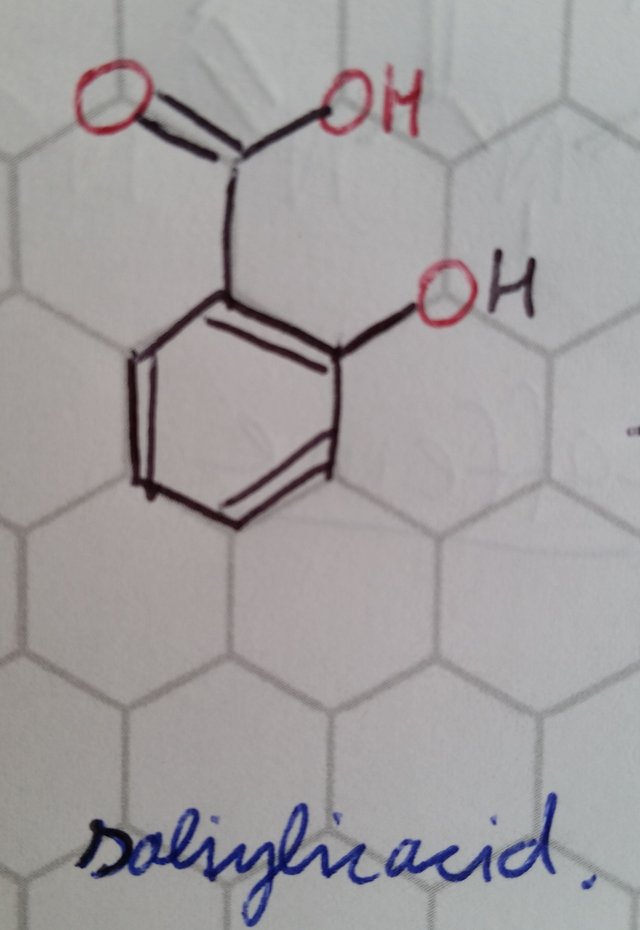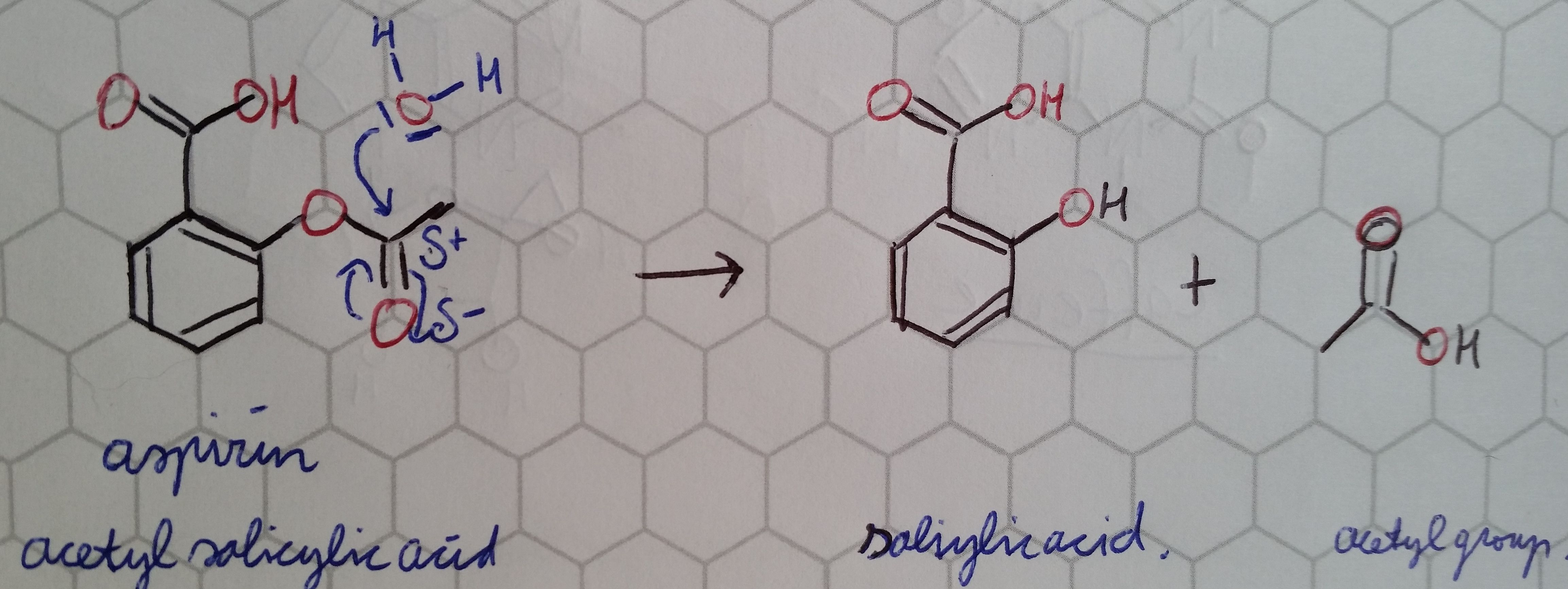Steemit Medicines: Aspirin - How it Works...
AAAH, that feeling. headaches, migraine, dizziness, the flashes it can disturb you a lot. Almost everyone knows that feeling. In this Steemit Medicines we will discover how the painkiller aspirin works, how it has been discovered and what uses it has...
The use of Aspirin
Aspirin is used as an analgesic (pain killer, headaches), as inflammatory drug (rheumatoid inflammation) Low doses are used in the treatment of cardiovascular disease. It is very efficient for headache treatments, but somewhat less when you suffer muscle pain/cramps.
How does a molecule of aspirin look like (instead of the white pill.....)
Aspirin is a quite simple molecule, consisting of an aromatic benzene ring with one carboxylic acid group and one acetyl group.

molecular structure of aspirin
Mechanism of Action
Aspirin works on our prostaglandin system, which it suppresses by inactivating the cyclo-oxygenase-enzyme (COX-enzyme). The prostaglandins are responsible for the transmission of pain information to the brain. By blocking that we do not "feel" pain anymore. It works differently than for example ibuprofen or diclofenac, because its ability to make a covalent bond with a Serine residue in the COX enzyme, which makes the enzyme completely inactive. Because the medicine molecule is now also "dead", medicinal chemists call aspirin a "suicide inhibitor of the enzyme". A brave action ;-)
The invention of aspirin
Aspirin is one of the oldest drugs that we know to use as a pain killer. It was already discovered in ancient times 2400 years ago by Hippocrates that chewing on Willow Bark would reduce pains and fevers. It was not known then that it was the salicylic acid that was the active molecule. It was Andreas Buchner (yes from the Buchner funnel) who was able to isolate the active extract and called it salicine, named after the tree Salix Alba (white willow).

Salicylic acid
Pharmacokinetics
Aspirin is the acetylated form of salicylic acid. In moist environment the aspirin can be hydrolysed (attack of water).

Hydrolysis of aspirin into salicylic acid
Both are taken up in the body via the stomach and brought to the liver. The non acetylated form would be more difficult to be taken up via the stomach because the ionization of the free OH groups. The acetyl group enhances absorption in the body.
The Future is bright for Aspirin?
Recent studies suggest that aspirin may also limit the rate of growth and the occurrence of certain types of cancer such as prostate, colon, pancreatic, and lung cancer.
Pictures are handmade using BENZNOTE to make drawing of chemical molecules easy for everybody. Check it out: www.benznote.com
Bee Happy!
@beesteem

This gem of a post was discovered by the OCD Team!
Reply to this comment if you accept, and are willing to let us share your gem of a post! By accepting this, you have a chance to receive extra rewards and one of your photos in this article may be used in our compilation post!
You can follow @ocd – learn more about the project and see other Gems! We strive for transparency.
Hi Ofcourse: accepted! Thanks @jeanpi1908
Here you got mentioned: https://steemit.com/ocd/@ocd/ocd-daily-issue-26
Here you got mentioned again https://steemit.com/ocd/@jeanpi1908/my-weekly-ocd-review-4
nice sharing